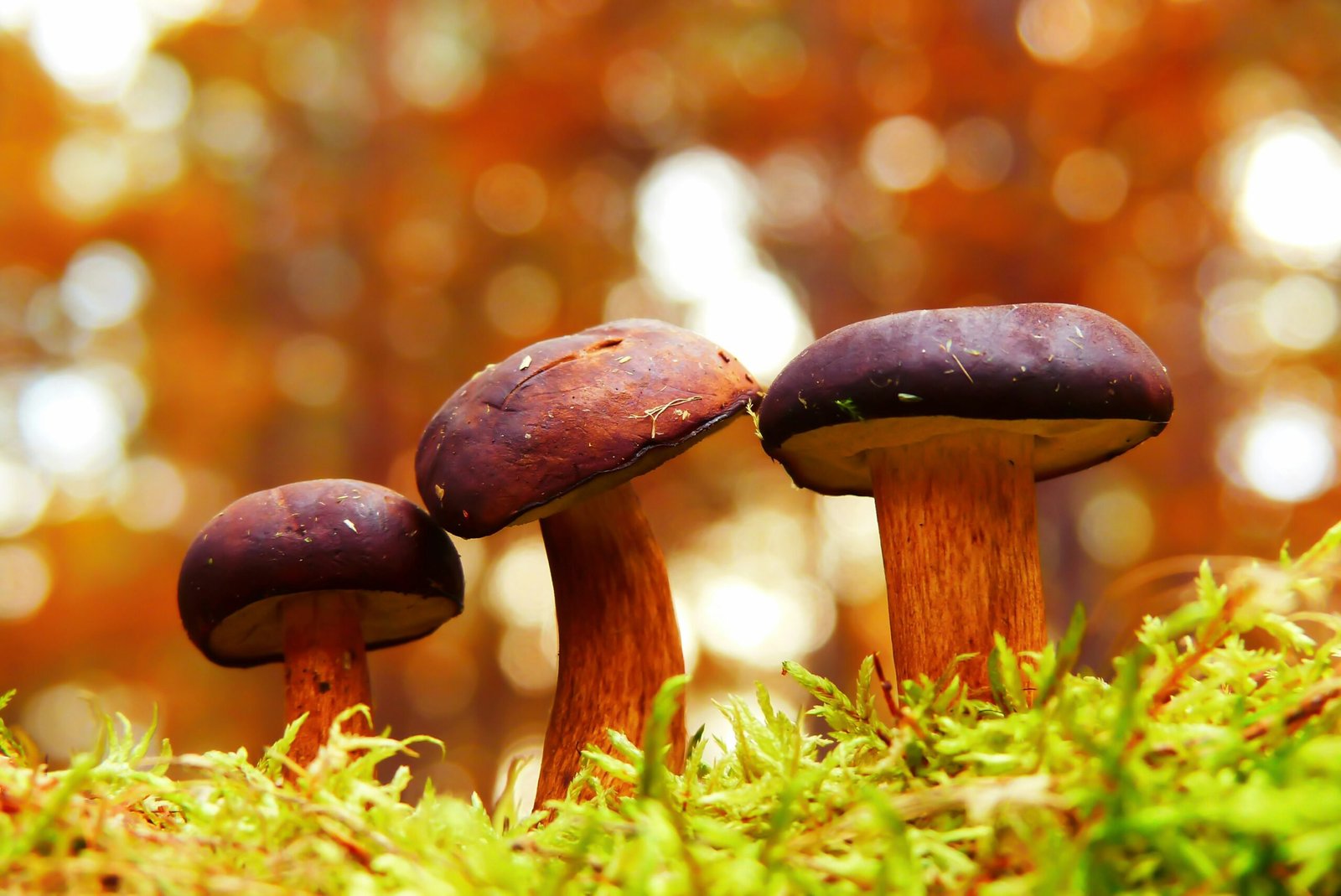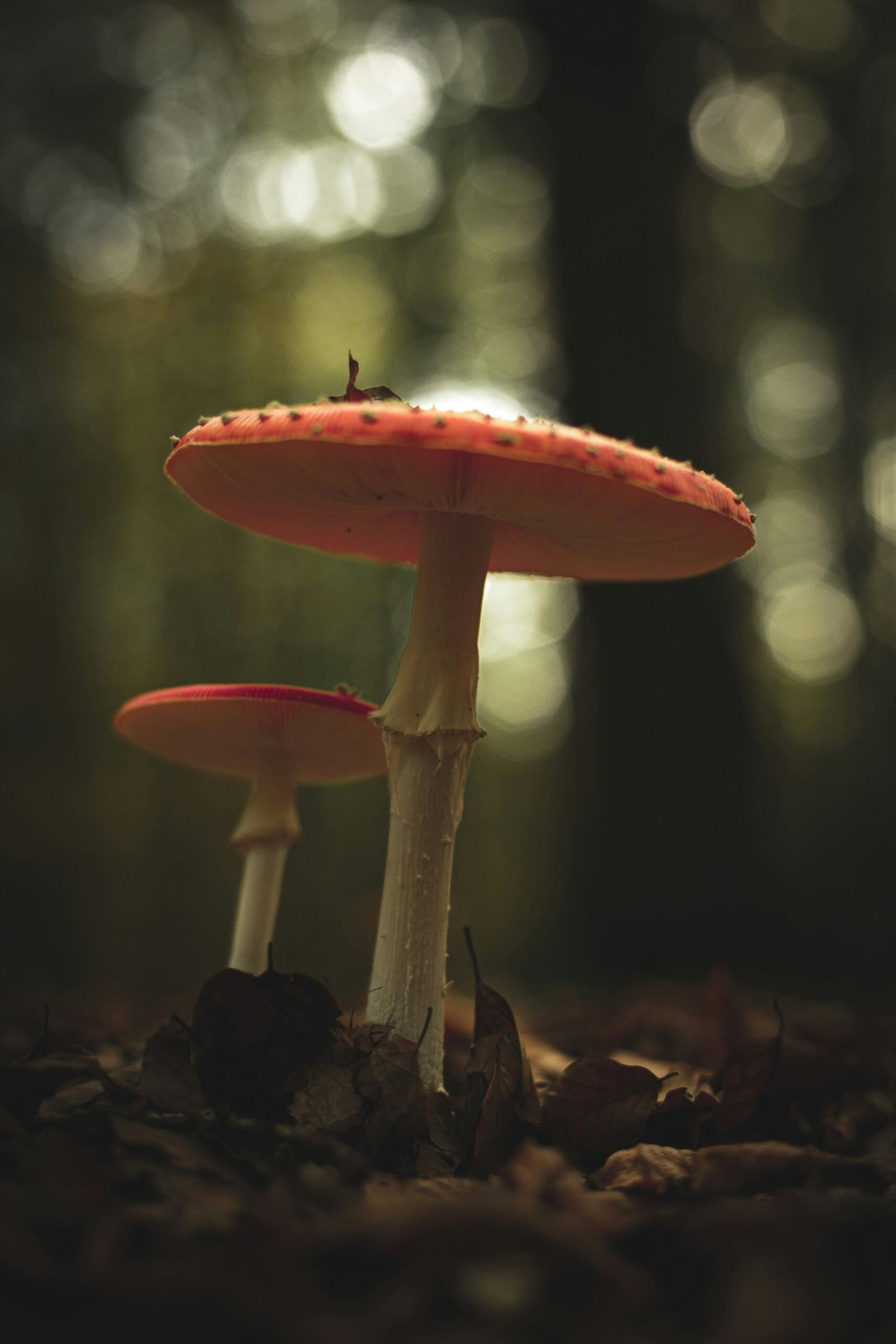Have you ever wandered through a forest at night and wished to uncover the secretive wonders hidden under the canopy? Nature’s light show might not be as obvious as the one put on by the stars above, but it’s a spectacle nonetheless. Among these secrets are bioluminescent organisms, such as the intriguing Mycena chlorophos, which light up the dark in a serene and mystifying way. Let’s embark on an enlightening journey into the world of this fascinating bioluminescent fungus.

What is Mycena Chlorophos?
In the lush, humid world of decaying forests, Mycena chlorophos stands out not just for its captivating glow but also for its ecological role. This small bioluminescent fungus, belonging to the family of Mycenaceae, is a marvel of nature. It has the miraculous ability to produce light through a chemical reaction, a trait that is not only visually captivating but also plays a crucial role in its survival and reproduction.
Description and Habitat
Picture a dainty mushroom, with its small, umbrella-like cap radiating a greenish glow. This enchanting sight can often be observed in merry clusters, nestled on rotting wood amidst damp forests. Mycena chlorophos is typically found in subtropical to tropical regions, with prominent sightings in Japan, Taiwan, Brazil, and some Pacific islands. Its inclination for moisture makes these damp locales the perfect home for its growth and luminescence.
The Science Behind the Glow
Mycena chlorophos is more than just a pretty sight. The glow you see comes from a biochemical process involving a substance called luciferin reacting with oxygen in the presence of an enzyme called luciferase. This reaction emits light, a cold glow that stands out in the nighttime woods. But why does this mushroom glow? The prevailing theory is that the light helps in spore dispersal by attracting insects, which in turn help in spreading the spores far and wide.
The Life Cycle of Mycena Chlorophos
Understanding the lifecycle of Mycena chlorophos offers insight into how such an ethereal organism survives and thrives. Like other fungi, Mycena chlorophos reproduces by releasing spores, which are the cornerstone of its existence.
Spore Release and Germination
The cycle begins when mature fungi release spores into the environment. These spores, tiny and almost invisible to the naked eye, float through the air, potentially landing in a hospitable environment. Given the right conditions—adequate moisture, temperature, and substrate—the spore germinates, giving rise to mycelium.
Mycelium Development
The mycelium is a network of thread-like structures that forms the main body of the fungus and plays a crucial role in nutrient absorption. As the mycelium spreads, it absorbs nutrients from its surroundings, decaying organic material like leaf litter and wood.
Fruiting Body Formation
Under favorable conditions, the mycelium develops into a fruiting body, the part of the fungus that we easily recognize as mushrooms. For Mycena chlorophos, this is when it starts to glow, often during specific seasons in its native habitat. The lifecycle circles back as these mushrooms mature and emit more spores, continuing the natural rhythm of life.
The Role of Mycena Chlorophos in the Ecosystem
While their glow steals the spotlight, Mycena chlorophos plays integral ecological roles. Let’s delve into the significance of their presence within their natural surroundings.
Decomposers of the Forest
Mycena chlorophos, like many fungi, are decomposers. They break down complex organic materials into simpler compounds, recycling nutrients back into the ecosystem. This process is vital in maintaining the forest’s health, as it ensures the continuation of nutrient cycles.
Support for Other Organisms
By breaking down dead organic materials, these fungi provide a fertile ground not just for other plants but also for microorganisms that use decomposed material as food. Furthermore, the light emitted also attracts insects, contributing to a mutually beneficial relationship for spore dispersion.
The Beauty and Bioluminescence of Mycena Chlorophos
The captivating luminescence of Mycena chlorophos is more than just a pretty light; it is a remarkable biological phenomenon worth understanding further.
The Chemical Process of Light Production
The bioluminescence in Mycena chlorophos derives from the chemical reaction between luciferin and oxygen, catalyzed by the enzyme luciferase. This reaction releases energy in the form of light—a complex process finely tuned and evolved over time.
Significance of the Glow
The glow serves multiple purposes. Primarily, it functions to attract insects to aid in spore dispersal. However, research also suggests the light might deter other organisms from consuming the fungi, though this area still requires more study.
Comparison with Other Bioluminescent Organisms
Bioluminescence is not unique to fungi. It’s a phenomenon that occurs across various species, from fireflies to deep-sea creatures. What makes Mycena chlorophos intriguing is its terrestrial nature compared to the marine-heavy distribution of bioluminescent organisms, offering a rare glimpse of terrestrial luminescence.
Here is a comparison of Mycena chlorophos with some well-known bioluminescent organisms:
| Organism | Habitat | Light Color | Purpose of Bioluminescence |
|---|---|---|---|
| Mycena chlorophos | Forests | Green | Spores dispersal |
| Fireflies | Terrestrial | Yellow/Green | Mating communication |
| Dinoflagellates | Marine | Blue | Defense mechanism against predators |
| Anglerfish | Deep Ocean | Blue | Lure prey |
This table illustrates the diversity of bioluminescence across environments, highlighting Mycena chlorophos’s unique ecological and biological roles in the forest understory.

Conservation and Study of Mycena Chlorophos
As with many species, learning about Mycena chlorophos provides a foundation for conserving its unique environmental niche.
Ongoing Research
Research into Mycena chlorophos and its relatives continues to uncover fascinating aspects of their biology and ecological roles. Scientists are exploring the exact mechanisms of their bioluminescence, the evolutionary advantages it confers, and potential applications of these natural processes. From biochemistry to ecology, this fungus presents numerous avenues for research.
Conservation Challenges
Despite their enchanting beauty, Mycena chlorophos faces threats like habitat loss and climate change. Their specific environmental requirements mean they’re particularly vulnerable to changes in climate conditions and deforestation. Conservation efforts need to focus on preserving their natural habitats to ensure these natural wonders continue thriving.
Cultural and Scientific Significance of Mycena Chlorophos
Alongside their biological allure, Mycena chlorophos holds cultural significance and potential scientific applications that stretch our imagination and technical advancements.
Cultural Fascination
For centuries, glowing fungi have been subjects of folklore and intrigue. In regions where Mycena chlorophos is found, they feature in local mythology and have inspired art and storytelling. Their ethereal glow sparks wonder and reverence, connecting us to nature’s mystical, unseen processes.
Potential Scientific Applications
Beyond cultural value, the bioluminescent properties of Mycena chlorophos hold promise for scientific innovation. Bioluminescent markers in scientific research, environmental sensors, and even bioluminescent plants for lighting purposes are areas where such fungi might one day have an impact. Nature’s ingenuity could well light our path to new technologies and greener solutions.

Conclusion: Nature’s Illuminating Wonder
Mycena chlorophos, though small and often hidden away, holds an endless fascination for scientists, nature lovers, and anyone who enjoys pondering the mysteries held in the darkness. The light they produce isn’t just a poetic glow in the distance; it’s a delicate dance of chemical reactions, ecological interactions, and evolutionary adaptations.
May your insights into the luminous world of Mycena chlorophos ignite your curiosity about the interconnected web of life on Earth, reminding us all of nature’s profound ability to inspire and awe with its subtle wonders. Who knew that beneath the rustling leaves and amidst the decay, such brilliant signals of life and light continue their age-old cycles, waiting just off the beaten path to be discovered and cherished?
